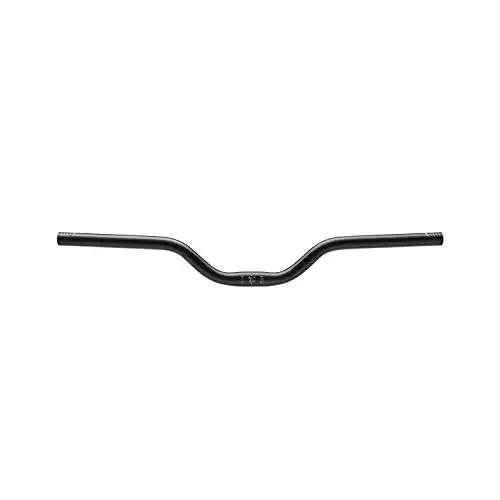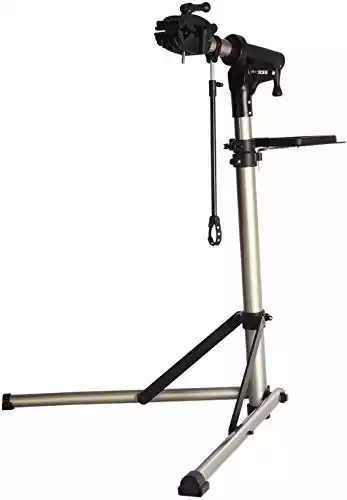Bicycle steering obviously helps you feel comfortable and safe when you are riding your bicycle, so it is important to get it correct. Having tried dozens of bicycles, I noticed a huge difference in how different they are to handle. Some feel as if they are too sensitive to steer. If you experience this, there’s no need to worry. We’re going to see what causes sensitive steering and what you can do about it.
Sensitive steering is usually caused either by narrow handlebars, too short stem, old steering mechanism, or a bicycle geometry that doesn’t suit your riding style or body composition. In some cases you can get used to this feeling, but in some cases, if it bothers you too much, it’s worth finding the solution to the issue.
If you are feeling uncomfortable with steering that feels too sensitive, let’s dive into some problems with solutions to keep you in line.
Narrow Handlebars
A recent trend, especially among city bikes without gears such as fixies, is to have narrow handlebars. This has the benefit of making it easier to ride between gaps in cars without hitting the mirrors, plus it makes the bike a bit lighter. On the downside though, it makes the steering more sensitive.
Electric bikes built for everything and priced for everyone. Shop Rad Power Bikes, America's #1 electric bike brand. Get out. Go further. Ride Rad.
With narrower handlebars the front wheel turns a lot even with small amounts of turs of the handlebar.


Solution
Narrow handlebars are broadly less than 50cm wide, and in some cases go down to 38cm wide! If you find your bike has narrow handlebars, a good solution is to fit wider handlebars. This does take some work, so it might be best to get your bike shop to do it.
If you want to do it yourself, follow these steps;
- Make sure you have hair spray, flat head screwdriver, various hex key tools and a torque wrench. It’s worth investing in a toolkit, which has all the necessary pieces that you may need. This one on Amazon contains everything to do your DIY bike maintenance and it’s cheaper than a tune-up at most bike shops.
- Measure the diameter of your current handlebars where they fit to the head stem, most are 25.4cm or 1 inch in diameter, but you need to confirm this.
- Get a wider set of handlebars, 55 to 60 cm is a good width, or 66cm if you want really wide ones like on a Mountain Bike
- To remove (and install) the grips hair spray is the best. Lift the inside edge of the grips with a flat head screwdriver, spray underneath, and twist the grips off, one at a time
- Loosen the bolts that fasten the brakes and or gears levers, and remove them. This can be tricky because depending on the configuration, not all bolts are accessible from the start. To make sure you remember how it was configured, take a photo of the bars before loosening any levers
- Now you can loosen the bolts that fasten the handlebars on the head stem and remove the narrow handlebars
- Insert the wider handlebars into the head stem and tighten the bolts. It is important to have the handlebars in a comfortable position, so before you fully tighten the bolts, sit on the bike and turn the handlebars to make sure the position is comfortable for you. Typically, there is a tightening torque for the handlebar bolts written on the head stem, so use the torque wrench to get the correct tightening torque and don’t overtighten the bolts. Also using thread lock on the thread is a good idea so they never loosen.
- Replace the gear and brake levers to suit you, and spray inside the grips and slide them back on. Hair spray is great here as it provides lubrication to slide the grips on, then dries tacky so the grips are stuck onto the handlebars.
Now you are ready to go!
Short head stem or swept handlebars
A short head stem means your hands are closer to the steering axis of the front wheel, and this makes the steering more reactive. Swept handlebars also have the same impact. This is not a 100% rule, however, as a short head stem also means your weight is further back on the bike, which means there is less weight on the front wheel, so the front wheel feels less sensitive. So, the type of frame you have does affect this too.



Solution
If you have a short head stem that is less than 85mm from the steering axis to the center of handlebars, try to install a longer head stem, around 100 to 130mm is a good range. This is quite an involved task on a safety-critical part of the bicycle. In addition, there are many different variations of how the head stem fits the bike, so do this only if you feel confident with some bike servicing basics.

If you have swept handlebars, and are generally comfortable except for the steering sensitivity, you might just have to get used to it. It can be a strange feeling as when you turn the handlebars, the grips move sideways to and from your body not forwards and backward as on straight handlebars.
The steering system
Typically, older-style bikes had a poor design that meant the steering actually became somewhat blocked over time. So, if you have recently changed from an older bike, there is also a chance your new bike’s steering feels sensitive because your old bike actually had very tough steering.
The feeling could be compared to an older car with unassisted steering to a newer one with a power steering assist.
The handlebars on your newer bike might feel more sensitive, but this could simply be because they are working better.

Older steering system designs used loose ball bearings. These would become blocked and increase the force to run the handlebars for two reasons that have been corrected on newer bikes.
Firstly, the loose ball bearings easily collect dirt and debris, and the grease was lost. New designs use sealed bearings which prevent dirt and debris from entering, plus keep the grease inside.
Secondly, if the clamping pressure became lower with loose ball bearings, they would start to wear the housings as they could become slightly displaced. This meant that the handlebars wanted to stay in the direction they were most frequently used – i.e. straight ahead. The sealed bearings used today also solve this issue as there is never looseness between the ball bearings and their housing.
This is a sturdy bike stand that makes bike maintenance much easier than flipping the bike upside down. Some tasks, such as working on the headtube, cable routing or truing the wheel are made really simple with this stand.
Perhaps if your handlebars are wide and the head stem is long, the low friction on the new steering system is simply something to get used to.
If you are still not satisfied we can peel back some layers of the mysterious world of bicycle geometry.
Bicycle geometry
There are two main things to consider when talking about bicycle geometry:
- The angle of your back when seated and riding
- Your ape index, or the relative length of your limbs compared to your torso. (OK, this term is normally used for rock-climbing, but I like it!)
Back angle
It’s not something talked about a lot when buying a bike, but your back angle is probably the most important factor to consider.

The more vertical your back is when seated on the bike, the less weight you have on your arms and hands. A more vertical back makes the steering feels less sensitive as you are not supporting your body weight as much with your arms. In addition, as more weight is over the rear wheel and less on the front, the front wheel feels less sensitive to turn.
Many older bikes and most city bikes (think Amsterdam or Copenhagen bikes) give a relaxed seating position, with your back being almost vertical.
However, many bikes are now inspired by mountain bikes that use an athletic position or road bikes which use an aerodynamic position where your spine is below 45 degrees.
Solution
Try to have a look at your back angle. If it seems quite far forward, perhaps you can try either a higher rise in the handlebars or the head stem. As shown in the picture, the head stem height (or angle) is the main difference between the moderate seating position and the athletic seating position.
If you still cannot get a comfortable feel, perhaps test ride some bikes at a store that have a more vertical back angle. If this feels better, you might need to change your bike to ensure you are comfortable.
Also note, that as you and your muscles become more used to cycling, the athletic position that previously felt uncomfortable might start to become usable.
Ape index
Of course, we all have unique body dimensions, and it is very hard to make a few frame sizes to suit all sizes of people. I personally have a very high ape index – my arms and legs are long compared to my torso – Leonardo Da Vinci would be appalled. However, my wife is the opposite. This means we don’t match the statistical data on gender stereotypes as shown by Liv bicycles here, where women typically have longer legs compared to their torso length than men.
Solution
If you have a short torso compared to your limbs, you should have a smaller frame (or at least a shorter top tube) and use a higher seat and handlebar position, which is what I do.
If you have a longer torso, of course, go the other way, use a larger frame, or longer top tube and a lower seat and handlebar position, which is how my wife’s bikes are set up.
To know your ape index simply measure your arm span, from the tips of your fingers, and divide this by your height. If it is higher than 1, your arms are longer than your torso. If it is lower than 1, your arms are shorter than your torso. This doesn’t mean anything in reality, but it does help to ensure the bike best fits your body. If your ape index is 1 exactly, Leonardo would be proud as you match his idea of a perfect human.
For women, it might be worth investigating buying a bicycle specially designed for women, such as the brand Liv, rather than a unisex or a men’s bicycle.
Happy Pedaling!



